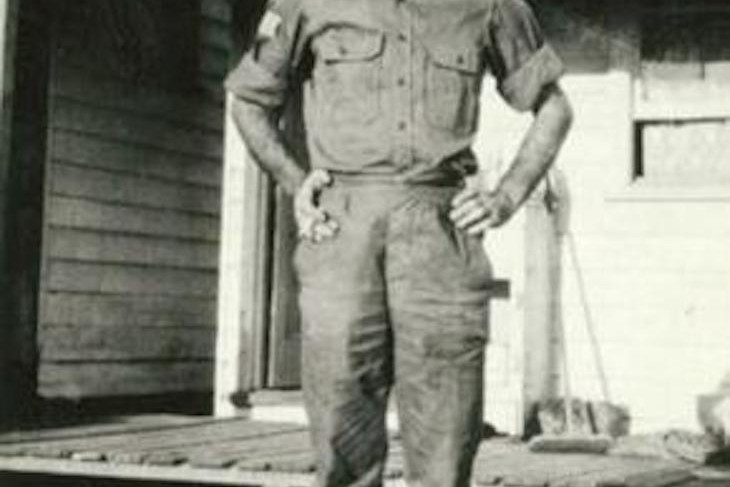General News
28 September, 2024
Veterans' Voices: Allan Leslie O'Neil
- Sally Bertram, RSL Military History Library. Contact Sally at sj.bertram@hotmail.com or call 0409 351 940.

Allan Leslie O’Neil was born in Stawell on August 15 1932.
He enlisted in Royal Australian Infantry Corps and was assigned the service number 36547.
He was a private in 1st Battalion RAR.
Allan served first in the Malayan Emergency, leaving Australia on September 20 1959.
He served in the Kuching and Singapore areas before returning to Australia on November 12 1961.
His service during the confrontation was also with 2 Squadron Special Air Services.
By the time of the Indonesian confrontation, which occurred between 1962 and 1966, Allan was a lance corporal.
Allan also served in Vietnam.
This service was from February 26 1968 until September 9 1968.
During his time in Vietnam he held the rank of corporal.
His unit was 2nd Special Air Service Squadron SASR (RA INF) in Vietnam.
Alan O’Neil died on October 30 1969 in South Perth of an illness that is not specified in his service record.
He was aged 37 years.
He was buried at Karrakatta Cemetery, Karrakatta, Perth.
Allan Leslie O'Neil's name is on panel six in the Commemorative Area at the Australian War Memorial
He is commemorated at Karrakatta Cemetery and Crematorium and on the Australian War Memorial Roll of Honour, the Grafton Clarence Valley Vietnam Veterans Memorial, the Kallangur Vietnam Veterans' Place, the Port Pirie Vietnam Veterans Honour Wall and the Seymour Vietnam Veterans Commemorative Walk Roll of Honour.
Special Air Service Regiment
The Special Air Service Regiment provides special operations capabilities in support of the Australian Defence Force.
This includes providing unique capabilities to support sensitive strategic operations, special recovery operations, training assistance, special reconnaissance and precision strike and direct action.
The Special Air Service Regiment - officially abbreviated as SASR though commonly known as the SAS - is a special forces unit of the Australian Army.
Formed in 1957 as a company, it was modelled on the British SAS with which it shares the motto, "Who Dares Wins".
Expanded to a regiment in August 1964, it is based at Campbell Barracks in Swanbourne, a suburb of Perth, and is a direct command unit of Special Operations Command.
Between 1966 and 1971 each of three "sabre" squadrons of SASR completed two tours of Vietnam.
SASR was based at Nui Dat where it acted as the "eyes and the ears" of 1st Australian Task Force and operated throughout Phuoc Tuy province as well as in Bien Hoa, Long Khanh and Binh Tuy provinces.
SASR personnel were highly trained and their role in Vietnam varied through conducting medium-range reconnaissance patrols, observing enemy troop movements, carrying out long-range offensive operations and ambushing in enemy-dominated territory.
SASR had the highest kill ratio of any Australian unit in Vietnam.
The Australian SAS operated closely with the New Zealand SAS, and New Zealand SAS soldiers were attached to each Australian squadron.
They also served with US Army Special Forces and conducted training missions.
The SASR squadrons were highly successful and were known to the Viet Cong as "Ma Rung" or "phantoms of the jungle" due to their stealth.
No 2 Squadron arrived in Vietnam in February 1968 to replace 1 Squadron.
It conducted its first patrol on March 5 and by the end of month had completed 29 patrols.
Up until that time SASR had primarily concentrated on carrying out reconnaissance and surveillance patrols.
However, 1ATF commander Brigadier RL "Ron" Hughes wanted to use the SAS to harass Viet Cong bases and attack their supply lines, with the result that the SAS undertook more offensive operations.
In April the squadron began conducting rece-ambushes in which patrols carried out reconnaissance of an area for several days and set ambushes on possible tracks.
These patrols were different to earlier patrols during which a patrol would either conduct reconnaissance or set ambushes - not a combination of the two.
In May 1968 SAS operations were limited to Phuoc Tuy province as the helicopters that normally supported their missions were being used to establish Fire Support Base Coral in Bien Hoa province.
Heavy fighting ensued and helicopters were in high demand.
Whereas in April 1968 the squadron had conducted 32 patrols, it deployed only 12 the following month.
The pattern of patrolling resumed in June and July and the squadron performed a number of other tasks as well.
These included providing a bodyguard for Prime Minister John Gorton when he visited Saigon and assigning instructors from the long-range reconnaissance patrol wing at Van Kiep, in Baria, to train South Vietnamese soldiers.
The SAS also had an exchange program with the US Navy Sea, Air and Land (SEAL) teams operating in the Mekong Delta.
The squadron's most unusual task, however, was Operation Overboard.
In this, they used fishing nets supported across a river to "catch" a sampan that was being used by the VC to resupply their forces.